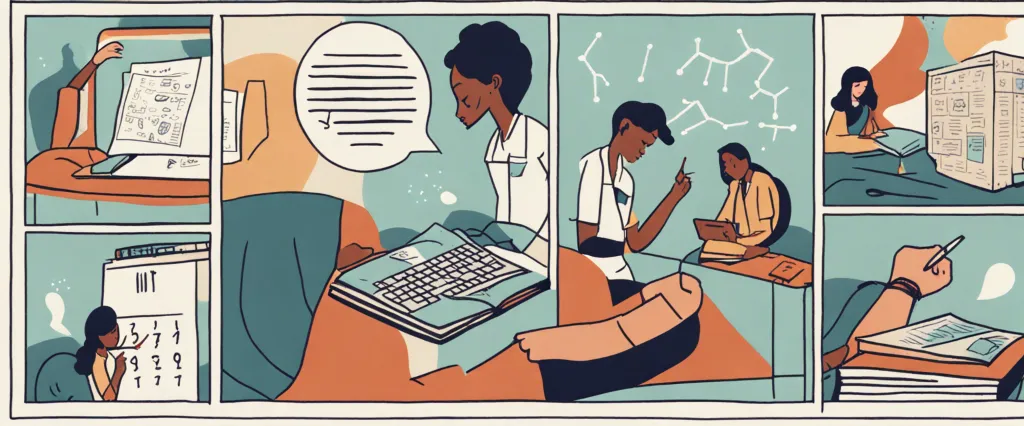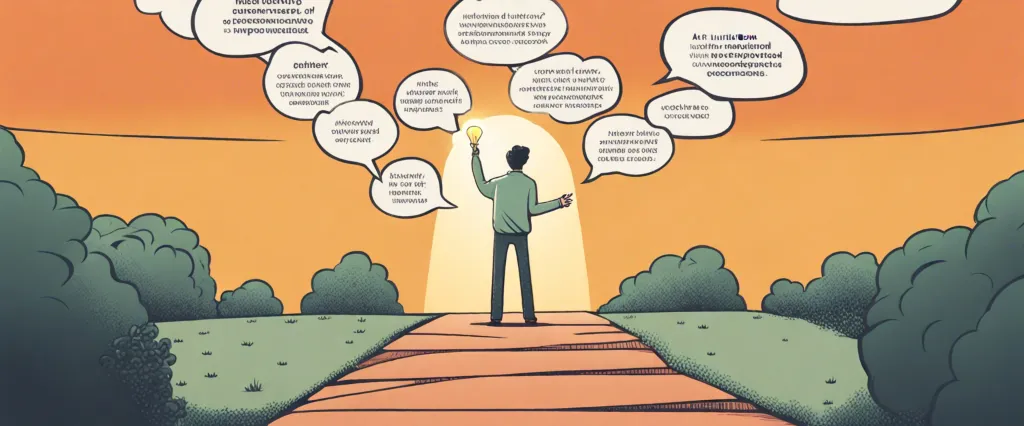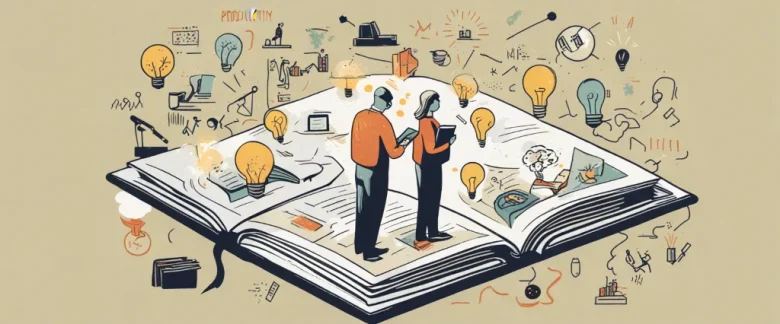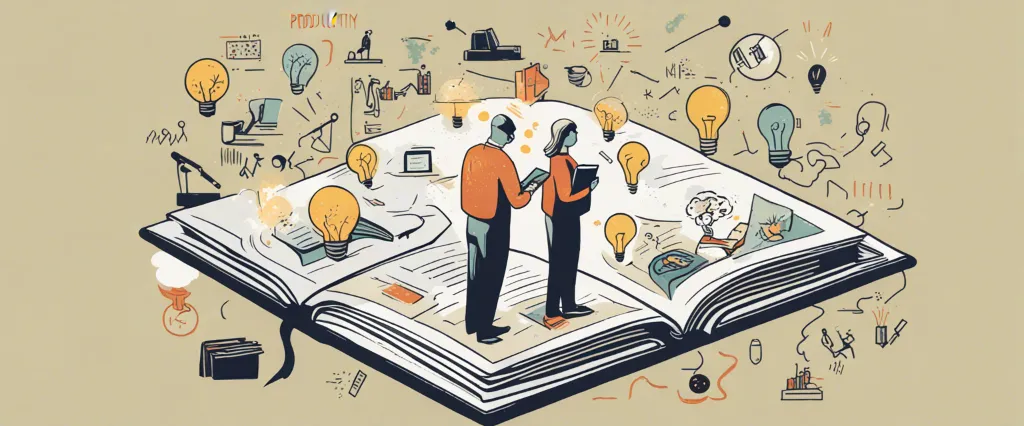In The Productivity Project, renowned productivity expert Chris Bailey takes readers on a captivating journey to explore the science-backed strategies and unconventional methods that can enhance our productivity and help us achieve our goals. Drawing from his year-long productivity experiment, during which he conducted intensive research and implemented various techniques, Bailey shares practical insights and actionable tips to optimize our time, focus, and energy. As a prolific writer, speaker, and consultant, Chris Bailey is considered one of the leading voices in the field of productivity and has been featured in The New York Times, The Wall Street Journal, and Harvard Business Review. Combining his expertise with personal anecdotes and scientific research, Bailey provides a captivating blueprint for anyone seeking to accomplish more and lead a fulfilling and purpose-driven life.
Chapter 1: The Productivity Mindset
Chapter 1 of “The Productivity Project” by Chris Bailey introduces readers to the concept of the productivity mindset and lays the foundation for the strategies and techniques that will be discussed in the book. Bailey believes that productivity is not just about doing more, but about accomplishing what’s truly important and meaningful.
Bailey starts by stressing the importance of identifying and focusing on your top priorities. He explains that our time and energy are limited resources, and we must learn to allocate them effectively to tasks that have the highest impact on our goals. The chapter emphasizes the significance of setting clear objectives and aligning one’s tasks with those objectives, which helps in avoiding distractions and time-wasting activities.
Bailey also introduces the idea of deliberate and intentional action. He argues that by being mindful of how we spend our time and deliberately choosing our activities, we can optimize our productivity. He encourages readers to examine their habits and determine what truly adds value to their lives, advocating for the elimination of nonessential tasks and distractions.
Furthermore, the chapter highlights the value of focusing on one task at a time, promoting the idea of deep work. Bailey explains that when we give our full attention to a particular task, we are more likely to achieve a high level of productivity and quality results.
Overall, Chapter 1 sets the stage for the productivity journey Bailey takes readers on in the book. It emphasizes the importance of being intentional and deliberate in our actions, aligning our tasks with our priorities, and fostering a focused mindset. This chapter serves as a call to action for readers to embrace a productivity mindset and lays the groundwork for the strategies and techniques that will be explored throughout the book.
Chapter 2: Managing Your Time
Chapter 2 of “The Productivity Project” by Chris Bailey, titled “Managing Your Time,” delves into various techniques and principles to help readers optimize their time and become more productive. The chapter emphasizes the significance of managing time effectively, as our time is finite and how we utilize it greatly impacts our achievements and satisfaction in life.
Bailey begins by highlighting the importance of identifying and understanding one’s priorities. He emphasizes the need to align our activities with our values and long-term goals, enabling us to allocate time more wisely. He introduces the concept of “self-determination theory,” which suggests that when activities align with our intrinsic motivations, we are more likely to be productive and fulfilled.
The author explores the idea of creating a “time budget” to allocate designated time slots for different activities, similar to managing personal finances. This technique helps individuals gain a more comprehensive view of their time allocation and prioritize accordingly. Bailey advises readers to implement a system of regular self-reflection to constantly reassess priorities, eliminate nonessential tasks, and ensure time is allocated to what truly matters.
Furthermore, the chapter explores the significance of setting deadlines and using time constraints to boost productivity. Bailey suggests implementing the “Parkinson’s Law,” which suggests that work expands to fill the time available. By setting tight deadlines, we can overcome procrastination and complete tasks more efficiently.
Bailey also emphasizes the importance of establishing clear boundaries and developing strategies to combat common time wastage, such as excessive social media usage and multitasking. He encourages readers to practice mono-tasking, focusing on one task at a time, to increase productivity and reduce distractions.
In summary, Chapter 2 of “The Productivity Project” provides readers with essential strategies to manage their time effectively. By aligning activities with values, creating a time budget, setting deadlines, and eliminating distractions, individuals can achieve higher levels of productivity and fulfillment in their lives.
Chapter 3: Managing Your Attention
Chapter 3 of “The Productivity Project” by Chris Bailey focuses on the essential skill of managing attention in order to boost productivity. The chapter begins by highlighting the importance of developing the ability to control our attention, as it is constantly being hijacked by external stimuli and distractions in the modern world.
Bailey suggests various strategies to manage attention effectively. Firstly, he emphasizes the significance of creating an ideal environment for work by eliminating unnecessary distractions such as noise, clutter, and interruptions. He also advises developing a routine and specific rituals to help signal the brain that it is time to focus and work.
The author explores the concept of multitasking and how it can hinder productivity rather than enhance it. He explains that the brain is not designed to handle multiple tasks simultaneously, leading to a decline in overall performance. Bailey suggests replacing multitasking with “singletasking,” which promotes full focus on one task at a time.
Additionally, the chapter delves into the topic of eliminating digital distractions. Bailey advocates for setting boundaries on smartphone and social media usage to prevent constant interruptions and maintain focus. He suggests turning off unnecessary notifications, utilizing time-tracking apps, and scheduling specific times for checking emails and messages.
Lastly, Bailey highlights the importance of taking regular breaks to enhance productivity. He recommends incorporating short breaks every 90 minutes to rejuvenate the mind and prevent mental fatigue. These breaks can include exercise, meditation, or engaging in activities that bring joy and relaxation.
Overall, Chapter 3 of “The Productivity Project” provides practical and actionable advice on managing attention effectively to improve productivity. By creating an optimal work environment, avoiding multitasking, eliminating digital distractions, and taking appropriate breaks, individuals can harness their attention to achieve higher levels of focus and productivity in their work.
Chapter 4: Managing Your Energy

Chapter 4 of “The Productivity Project” by Chris Bailey explores the concept of managing one’s energy as a means of achieving higher productivity. Bailey emphasizes that managing time alone is insufficient; one must also consider their energy levels and how effectively they are utilizing it.
Bailey introduces the notion of ultradian rhythms, the natural cycle our bodies go through involving alternating periods of high and low energy. He advises leveraging these cycles to maximize productivity by working in focused, intense bursts, followed by short breaks to recharge. This approach, known as the “Pomodoro Technique,” involves working for 25 minutes and then taking a 5-minute break. Bailey recommends adjusting these intervals based on personal preferences and energy levels.
The chapter also emphasizes the significance of sleep and its impact on energy levels. Bailey emphasizes the importance of prioritizing quality sleep to enhance productivity. He provides tips for optimizing sleep quality, such as establishing consistent sleep and wake times, creating a relaxing wind-down routine, and minimizing exposure to electronic screens before bed.
Furthermore, Bailey emphasizes the importance of physical exercise for boosting energy levels. Regular physical activity has numerous benefits, including improved focus, reduced stress, and increased energy. He suggests incorporating exercise into daily routines and finding activities that bring joy and energy.
Lastly, the chapter delves into the importance of managing mental energy. Bailey suggests practicing mindfulness and meditation techniques to enhance focus and clarity. Taking regular breaks from technology, reducing multitasking, and cultivating a positive mindset are other strategies mentioned.
In conclusion, managing energy is a crucial aspect of productivity. By understanding the body’s natural cycles, prioritizing quality sleep, engaging in regular exercise, and managing mental well-being, individuals can maximize their energy levels, leading to enhanced productivity and overall well-being.
Chapter 5: Managing Your Tasks
Chapter 5 of “The Productivity Project” by Chris Bailey is titled “Managing Your Tasks.” In this chapter, Bailey explores various strategies and techniques to effectively manage tasks and increase productivity.
Bailey emphasizes the importance of prioritization. He introduces the concept of the “Rule of Three,” which involves selecting three main tasks each day that will contribute significantly to achieving your goals. By focusing on a limited number of tasks, individuals can avoid being overwhelmed and increase their chances of success.
The author also discusses the benefits of using task management systems such as to-do lists and digital apps. Bailey explains that these tools can help individuals stay organized, manage their time efficiently, and ensure that important tasks are not overlooked. However, he cautions against becoming overly reliant on these systems, as they can sometimes create a false sense of productivity.
Throughout the chapter, Bailey offers practical tips on how to effectively manage tasks. He suggests breaking tasks into smaller, manageable steps to make them less intimidating and more achievable. He also emphasizes the importance of incorporating breaks and rest periods into the workday to maintain productivity.
Furthermore, Bailey discusses the significance of setting realistic deadlines and avoiding multitasking. He explains that multitasking can lead to a decrease in overall productivity and encourages readers to focus on one task at a time.
Overall, Chapter 5 of “The Productivity Project” provides valuable insights into how to effectively manage tasks to increase productivity. Bailey offers practical strategies and tips that can help individuals prioritize their work, stay organized, and work more efficiently towards their goals.
Chapter 6: Managing Your Boundaries
Chapter 6 of The Productivity Project by Chris Bailey, titled “Managing Your Boundaries,” explores the importance of setting boundaries to enhance productivity and overall well-being. Bailey begins by acknowledging that setting boundaries can be a challenging task, but once achieved, it can significantly increase one’s efficiency and satisfaction.
Bailey emphasizes the significance of mastering three types of boundaries: physical, mental, and temporal. Physical boundaries involve organizing and decluttering our physical environment. By removing distractions and clutter, we create a conducive workspace that promotes focus and concentration. Additionally, Bailey suggests implementing a “digital detox” by minimizing the use of electronic devices to reduce interruptions.
Mental boundaries revolve around training our minds to stay focused and present. Bailey introduces the concept of mindfulness and its benefits in managing mental boundaries. By practicing mindfulness techniques, such as meditation and deep breathing, individuals can develop greater awareness and control over their thoughts and emotions. This, in turn, leads to improved focus and productivity.
Temporal boundaries entail managing our time effectively. Bailey encourages readers to prioritize tasks, set realistic deadlines, and become proficient in time-blocking techniques. By dedicating specific time slots to different activities and avoiding multitasking, individuals can maximize their productivity and avoid feeling overwhelmed.
Furthermore, Bailey touches upon the importance of establishing boundaries with colleagues, friends, and family. Communicating one’s availability and limits allows for better work-life balance and reduces unnecessary interruptions.
In conclusion, Chapter 6 of The Productivity Project highlights the significance of setting and managing boundaries as a means to enhance productivity, focus, and overall well-being. By decluttering both our physical and digital spaces, practicing mindfulness to control our thoughts, and efficiently managing our time, we can create a productive and balanced lifestyle.
Chapter 7: Managing Your Goals
Chapter 7 of “The Productivity Project” by Chris Bailey focuses on the importance of managing goals effectively. Bailey starts by emphasizing the need to set goals that align with one’s priorities and values. He introduces the concept of “depth goals,” which are long-term, meaningful goals that contribute to a person’s purpose and fulfillment in life.
Bailey suggests using the “rule of three” to manage goals by focusing on no more than three major goals at a time. This allows for greater focus and concentration, increasing the likelihood of success. Additionally, he highlights the significance of reviewing goals regularly to ensure they remain relevant and in line with one’s desired outcomes.
The chapter also covers strategies for breaking down goals into smaller, manageable tasks. Bailey introduces the “five-level plan,” which involves breaking goals into five subcategories: project, goal, objective, milestone, and task. This approach helps individuals create an actionable plan and understand the necessary steps to achieve their goals.
Bailey discusses the importance of establishing a routine and sticking to it. By scheduling specific times for goal-related activities, individuals can avoid procrastination and maintain a consistent effort towards their objectives. He also encourages avoiding distractions and setting boundaries to ensure undisturbed time for goal pursuit.
Furthermore, the chapter emphasizes the need for accountability and support. Bailey suggests finding an accountability partner or joining a group with similar goals to provide motivation and encouragement along the way. Celebrating progress and milestones is also mentioned as a way to stay motivated and maintain momentum.
In conclusion, Chapter 7 of “The Productivity Project” emphasizes the importance of managing goals effectively by aligning them with personal values, utilizing strategies like the rule of three and the five-level plan, establishing routines, and finding support and accountability. By implementing these strategies, individuals can maximize their productivity and achieve their desired outcomes.

Chapter 8: The Productivity Project
Chapter 8: The Productivity Project of the book “The Productivity Project” by Chris Bailey focuses on the importance of managing energy rather than solely focusing on managing time. Bailey delves into various strategies and experiments he conducted to enhance his energy levels and boost overall productivity.
Bailey begins by discussing the significance of sleep. He emphasizes the importance of getting sufficient sleep and how it directly influences productivity levels. Through his own experiments, Bailey found that even a small reduction in sleep duration led to a decrease in focus, creativity, and overall well-being. He suggests establishing a consistent sleep routine and avoiding exposure to screens before bed to improve the quality of sleep.
The chapter also delves into the benefits of regular exercise and its impact on productivity. Bailey describes how physical activity not only enhances energy levels but also boosts cognitive abilities, helping individuals think clearly and make better decisions. He recommends incorporating exercise into daily routines, even if it’s just a short walk during breaks.
Furthermore, Bailey explores the impact of diet on productivity. He highlights the importance of consuming nutritious food and staying hydrated. Bailey experimented with different diets, eventually settling on a personalized approach that worked best for him. He stresses the significance of finding a healthy diet that suits an individual’s needs and supports sustained energy levels throughout the day.
Lastly, Bailey discusses the concept of downtime and the necessity of taking breaks throughout the day to recharge. He recommends short breaks every 90 minutes to maintain focus and prevent burnout. Bailey also touches on the importance of practicing relaxation techniques, such as deep breathing or meditation, as they positively impact overall energy and productivity levels.
In summary, Chapter 8 of “The Productivity Project” emphasizes the crucial role energy management plays in productivity. Bailey encourages readers to prioritize sleep, exercise regularly, maintain a healthy diet, and incorporate regular breaks to optimize their energy levels and thereby enhance productivity.
After Reading
In his book “The Productivity Project,” Chris Bailey explores the various aspects of productivity and provides readers with insightful tips and strategies to enhance their efficiency. Bailey’s experiments and research findings offer practical advice on how to effectively manage time, increase focus, and ultimately achieve more meaningful work. By prioritizing tasks, implementing effective habits, and eliminating distractions, individuals can optimize their productivity levels and lead a more fulfilling and impactful life. Bailey’s experience and passion for productivity shine through, making “The Productivity Project” an essential read for anyone seeking to improve their productivity and make the most of their time.
1. Deep Work: Rules for Focused Success in a Distracted World” by Cal Newport – This book offers practical strategies for eliminating distractions and improving productivity through deep work. Newport explores the importance of concentration and provides actionable tips to achieve more meaningful, focused work.
2. Atomic Habits: An Easy & Proven Way to Build Good Habits & Break Bad Ones” by James Clear – Clear delves into the science of habit formation and provides a framework for breaking bad habits and building productive ones. This book offers practical techniques to transform your daily routines and maximize productivity.
3. Getting Things Done: The Art of Stress-Free Productivity” by David Allen – Allen’s widely acclaimed book presents a system for organizing tasks and managing workflow to enhance productivity. With actionable advice and techniques, this book helps readers free their minds from clutter and increase efficiency.
4. Essentialism: The Disciplined Pursuit of Less” by Greg McKeown – McKeown advocates for the idea that focusing on fewer tasks and saying “no” to non-essential commitments leads to increased productivity and fulfillment. This book helps readers eliminate distractions and make deliberate choices to achieve their goals.
5. The 4-Hour Workweek: Escape 9-5, Live Anywhere, and Join the New Rich” by Timothy Ferriss – Ferriss challenges the conventional approach to work and introduces strategies for escaping the traditional 9-5 routine. By leveraging outsourcing and automation, this book offers tips for achieving greater productivity while working fewer hours.
These books, like “The Productivity Project,” offer valuable insights, practical techniques, and applicable strategies to help readers enhance their productivity and achieve their goals.




